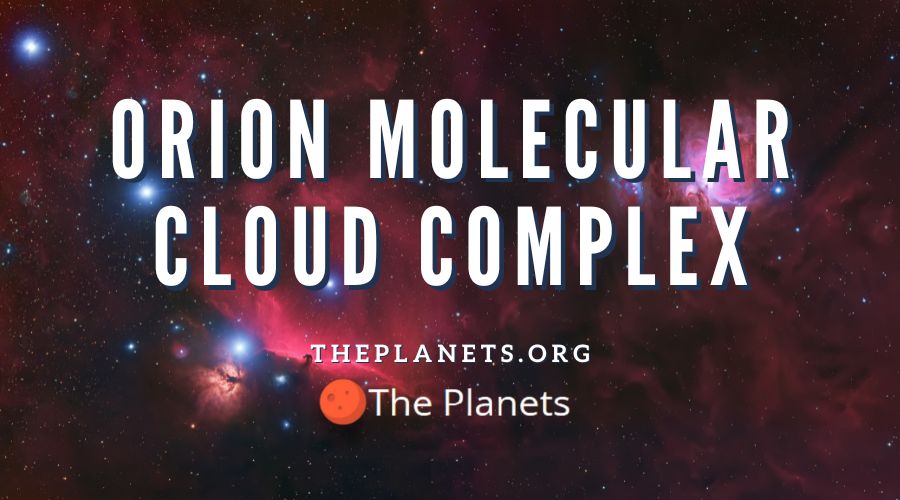
The Orion Molecular Cloud Complex, also known as simply the Orion Complex, is a star forming region — one of the most active of these regions visible in the night sky. It is located in the Orion constellation in the Milky Way and is between 1,000 and 1,4000 light years away from us, and hundreds of lights years across.
The Complex is home to five main components — Orion A and B, which are two giant molecular clouds, Orion OB1 Association, Lambda Orionis Molecular Ring, which is centered on Meissa, and the Orion-Eridanus Superbubble.
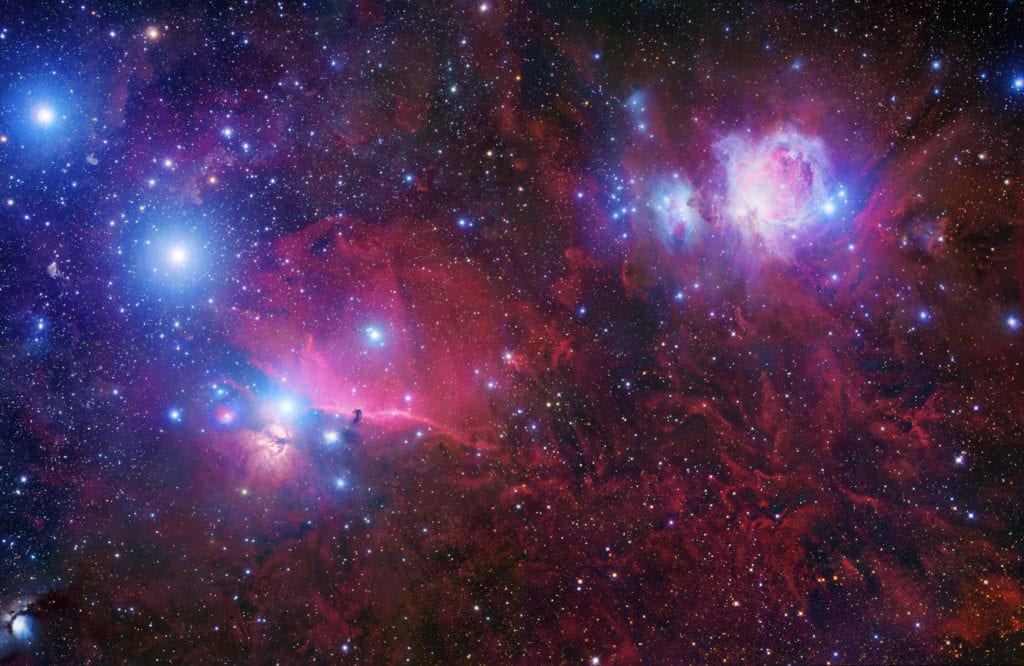
The region contains protoplanetary discs and very young stars, as well as dark nebulae, emission nebulae, reflection nebulae, and H II regions. Much of the Complex is bright in infrared wavelengths due to the heat-intensive processes involved in stellar formation.
Bright stars currently forming in the Orion Molecular Cloud Complex form in Orion A and B, but there are also a number of older stars no longer associated with the molecular gas that are also part of the Complex. Most notably these are the Belt of Orion’s (Orion OB1b), as well as the dispersed population north of it (Orion OB1a).
The Complex’s right ascension is 05h 35.3m and its declination is −05° 23′. In 2010, ripples on the surface of Orion’s Molecular Clouds were discovered, which are the result of the expansion of the nebulae gas over pre-existing molecular gas.
Many of the nebulae and dark clouds in the Complex can be observed through binoculars or small telescopes, while others, such as the Orion Nebula, can be seen with the naked eye.
Components of the Orion Molecular Cloud Complex
Orion A
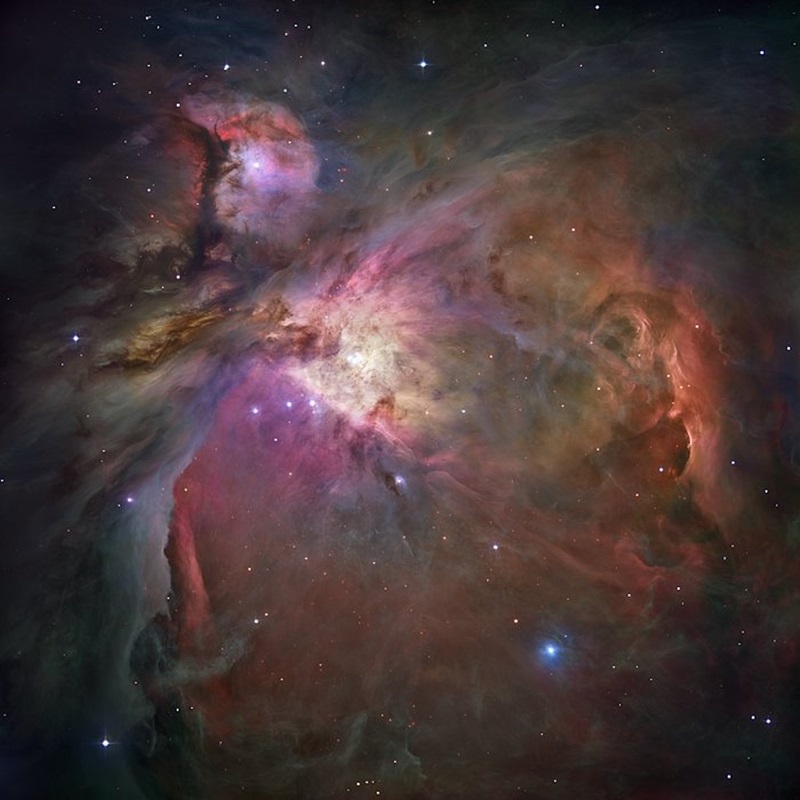
Orion A is a giant molecular cloud and the most active star-forming region in the local neighbourhood of the Sun. In the last few million years about 3000 young stellar objects were formed in this region, including around 190 protostars and around 2600 pre-main sequence stars.
Orion A contains the Orion Nebula, which sits at the “head” of the cloud, about 1300 light years (400 parsec) away from the Sun. However, the “tail” of Orion A is located around 1530 light years (470 parsec) away from the Sun, meaning the cloud has a true length of 290 lightyears (90 parsec) and the stars within it do not have the same distance to us. The cloud has a mass in the order of 105 solar masses.
Orion B
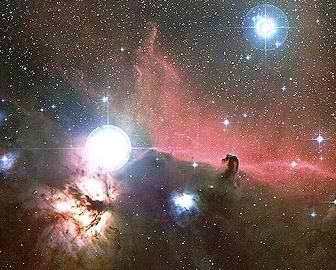
Orion B is also a giant molecular cloud that is around 1370 light years (420 parsec) away from Earth. It has a size of about 1.5 kpc² and a mass around 105 times that of the Sun.
Orion B is home to several star forming regions, including the Flame Nebula and the Horsehead Nebula. The star cluster inside the Flame Nebula is the largest cluster within Orion B.
Orion OB1 Association
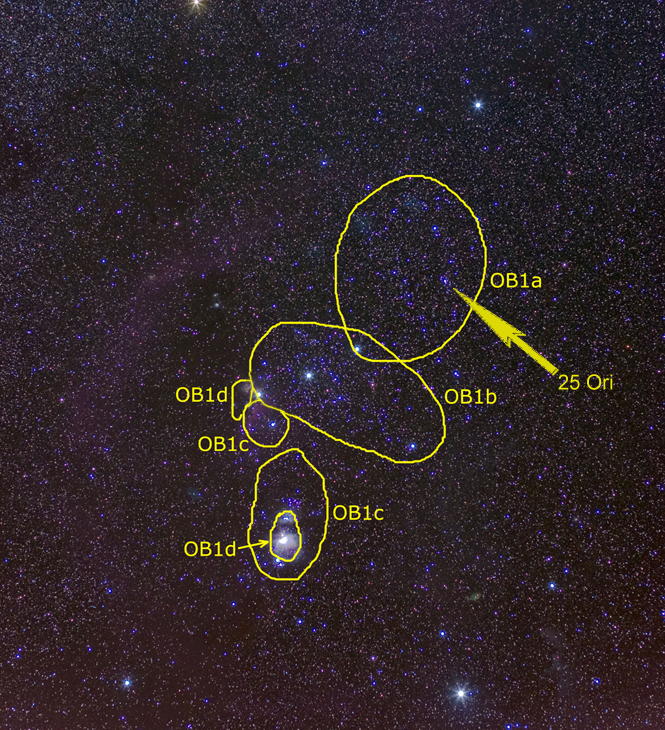
The Orion OB1 Association is a contingent group of several dozen hot giant stars of spectral types O and B. Associated are thousands of lower-mass stars, and a smaller but significant number of protostars.
The oldest subgroup of Orion OB1 association with 8-10 million years is Orion OB1a, northwest of Orion’s Belt, and the youngest subgroup with less than 2 million years is Orion OB1d, which contains the Orion Nebula cluster and NGC 2024.
Lambda Orionis Molecular Ring
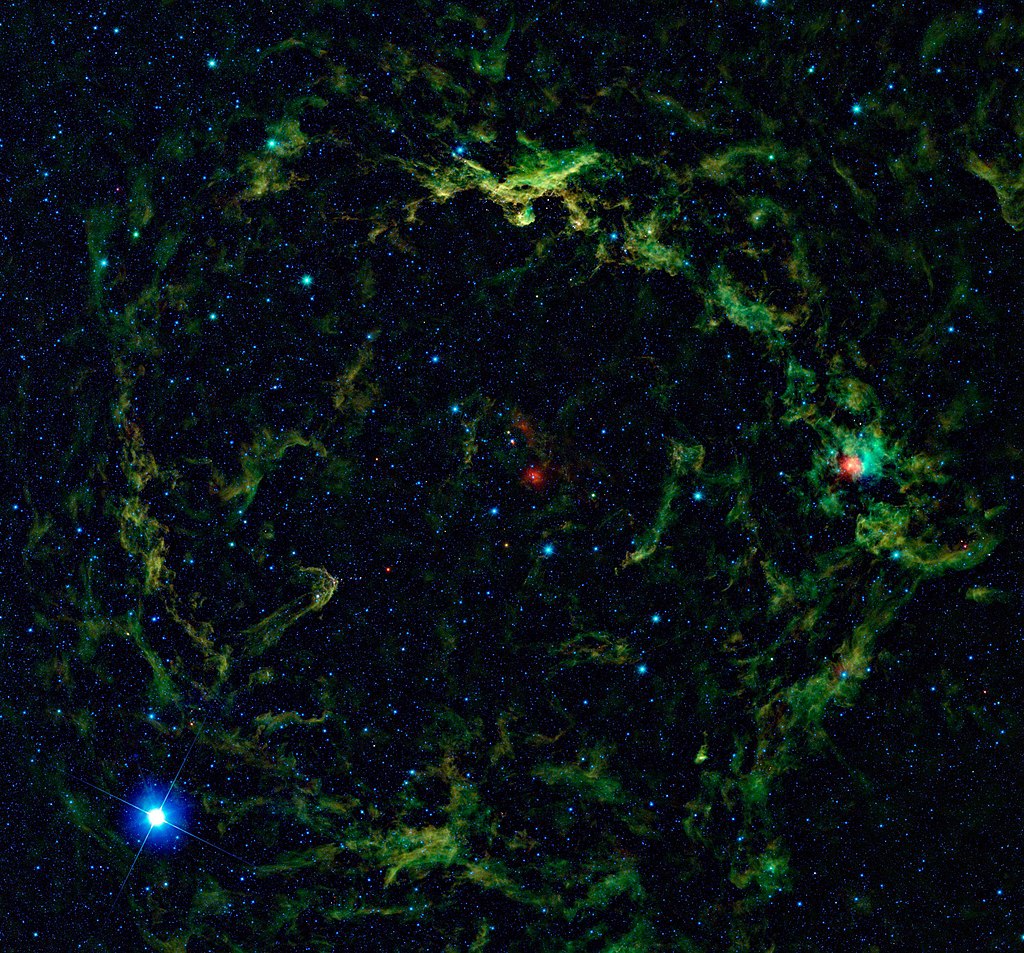
The Lambda Orionis Molecular Ring, also known as Sharpless 264, is a molecular cloud and H II region, which can be seen in the northern region of the Orion Molecular Cloud Complex. It is named after its main star, Lambda Orionis, also known as Meissa, which is a blue giant responsible for the ionization of the surrounding material.
It is thought that this ring formed after a supernova happened inside the central star-forming region that once surrounded the Lambda Orionis Cluster, dispersing the material into the ring seen today.
In regions of the ring, active star formation is still ongoing.
Superbubble

The Orion–Eridanus Superbubble is a superbubble located west of the Orion Nebula. The region is formed from overlapping supernova remnants that may be associated with the Orion OB1 stellar association. It stretches for around 1200 light years across.
Some of the Orion-Eridanus Superbubble was first seen as Barnard’s Loop in Hydrogen-alpha images, wrapping around the eastern portion of Orion. The other part of the superbubble that is seen in Hydrogen-alpha is the Eridanus Loop.
Notable Nebulae within the Orion Molecular Cloud Complex
Orion A
- The Orion Nebula (Messier 42)
- Messier 43
- Sh2-279
- NGC 1980
- Orion Molecular Cloud 1
- The Orion Molecular Cloud 2
- Orion Molecular Cloud 3
- Orion Molecular Cloud 4
- NGC 1981
- NGC 1999
Orion B
- Flame Nebula (NGC 2024)
- Horsehead Nebula
- IC 434
- Messier 78
- McNeil’s Nebula
Orion OB1 Association
- Orion’s Belt
- Sigma Ori Cluster
- 25 Ori Cluster
Lambda Orionis molecular ring
- Lambda Ori Cluster
- Barnard 30
- Barnard 35
Orion-Eridanus Superbubble
- Barnard’s Loop
- Eridanus Loop
Image Sources:
- Orion A- by NASA, ESA, M. Robberto ( Space Telescope Science Institute/ESA) and the Hubble Space Telescope Orion Treasury Project Team
- Orion B – http://loke.as.arizona.edu/~ckulesa/research/uks001.jpg
- Orion OB1 Association – By Orion 3008 huge-OB1.png: Mouser, Roberto Muraderivative work: Sadalsuud – Orion 3008 huge-OB1.png, CC BY-SA 3.0, https://commons.wikimedia.org/w/index.php?curid=11998774
- Lambda Orionis Molecular Ring – By NASA – http://www.nasa.gov/mission_pages/WISE/multimedia/gallery/pia14040.html, Public Domain, https://commons.wikimedia.org/w/index.php?curid=19872149
- Superbubble – By ESO – http://www.eso.org/public/images/eso9948d/, CC BY 4.0, https://commons.wikimedia.org/w/index.php?curid=10211530